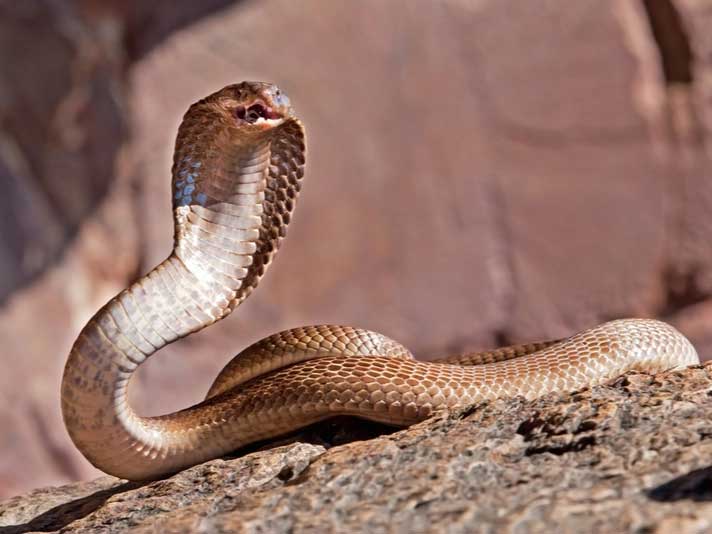Cape cobras are medium-sized venomous elapids of the Naja genus and grow to about 5 1/2 feet in length.
South African pilot Rudolf Erasmus was piloting a private jet from South Africa’s Western Cape to the town of Nelspruit when he felt what he described as a cold sensation under his shirt. That slithering sensation was not any ordinary sensation but the movements of a Cape cobra (Naja nivea). When Erasmus looked down, he observed the cobra under his seat.
“As I turned to my left and looked down, I could see the head of the snake receding back underneath my seat,” Erasmus told NPR. “At which point there was a moment of stunned silence, to be brutally honest.” “I then informed my passengers of what was going on… but everybody remained calm,” he recounted.
Cape Cobras Eat Their Own Kind, But Only Males
Erasmus then turned the plane around and made an emergency landing at the closest airport, in the town of Welkom. “I was more afraid of what the snake might do. Luckily it didn’t strike anyone, otherwise that would have changed or complicated the whole situation,” Erasmus said. However, when the light plane landed, a search for the reptile turned up empty.
Cape Cobra Information
Cape cobras are medium-sized venomous elapids of the Naja genus and grow to about 5 1/2 feet in length. They feed on virtually any animal that they can fit into their mouths, including other snakes as well as dead animal matter. They vary in coloration, from a bright butterly yellow to speckled, dark brown and reddish black. Due to their coloration, they are also known as the yellow cobra, the brown cobra and the spectacled cobra.
The species is endemic to southern Africa and are generalists, living in deserts and fynbos (natural shrubland or heathland vegetation) to high altitude forests. The Cape cobra is commonly found in South Africa, but is also native to Lesotho, Namibia, and Botswana. A diurnal snake, the Cape cobra can be found on the ground as well as in trees. At rest, this species can be found in termite mounds, holes in the ground, wood piles and other brush. It is a species of Least Concern according to the IUCN.



